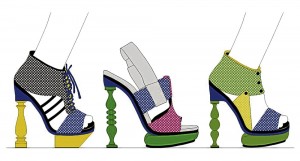
In beauty pageants, the beauty queen is stale news soon after the crown is transferred to a new winner, signaling the end of her year-long reign. “It ends there, and we don’t want that,” said FDCP president JC Buendia.
Ergo, the 20 finalists (10 for apparel and 10 for accessories), which were named recently, were asked to present a business plan along with the sketches of their contest collection. Fashion designers are artists who often don’t know how to run a business, Buendia said. The finalists will also receive mentoring from School of Fashion and the Arts to improve on their skills, he added.
New competition
“Weaving the Future,” the title of the FDCP tilt, received over 200 entries. It takes the place of the former FDCP contest that sent winners to the now-defunct international design
This year’s contest has also taken on a social dimension. The finalists are paired with select communities who will produce for them a variety of raw fabrics and indigenous materials. FDCP and its partners, PLDT and Smart, will provide livelihood workshops for both the finalists and their partner communities.
GK Atelyer, the newly set up fashion house of Gawad Kalinga in Bulacan, will produce the winner’s collection. The winners will receive P200,000 in seed money.
“We really want new designers to learn how to use our indigenous fabrics in a modern way, to modernize the notion of a ‘Filipino look,’” Buendia said. This, he added, is intended to dispel the popular notion that local fabrics are only for used for “costumes.”
Apparel segment
The contest finalists list a motley of local materials in their contest collection.
For the apparel segment, Benjie Alvarez proposes the use of Manila piña and yakan weave made of cotton thread from Zamboanga for his collection. Abaca, jusi, piña, capiz and coconut shells are Concordio Sajorda Jr.’s materials. Genesis Alcantara will use jusi, Paete wood carvings, Lumban embroidery and Davao woven fabrics, while Harold Victor Dominguez’s picks are inabe from Kalinga and Benguet. Marian Andrada will use a variety of Aklan piña.
Mark Archibal Tamayo’s collection is a combination of piña silk, abaca, wood carvings and t’nalak. Niño Dominic Angel has a custom fabric made of 30-percent water lily and 70-percent cotton. Noelle Llave combines Bulacan leather and hablon from Iloilo, while Pristine Joyce de Guzman uses piña and banana fiber, abaca and jusi. Roland Alzate’s materials
The finalists for the accessories division—Adante Leyesa, Chynna Roxanne Gonzalez, Earl Carlo Gariando, Heidrun Milan, Joseph Paul Villarosa, Kristal Leen de Guzman, Maria Esperanza Victoria Balingit, Mark Archibal Tamayo, Roselyn Fortus and Wanda Trixi Bandojo—also list a variety of indigenous materials: abaca, piña, ticog, pinokpok, t’nalak, talahib, bamboo, South Sea pearls, among others.
Buendia advised this new breed of designers to be keen observers, and to develop patience. Success, he said, doesn’t come overnight. Good PR and self-marketing, added Buendia, is “only half of it. First, you need to have the skills.”